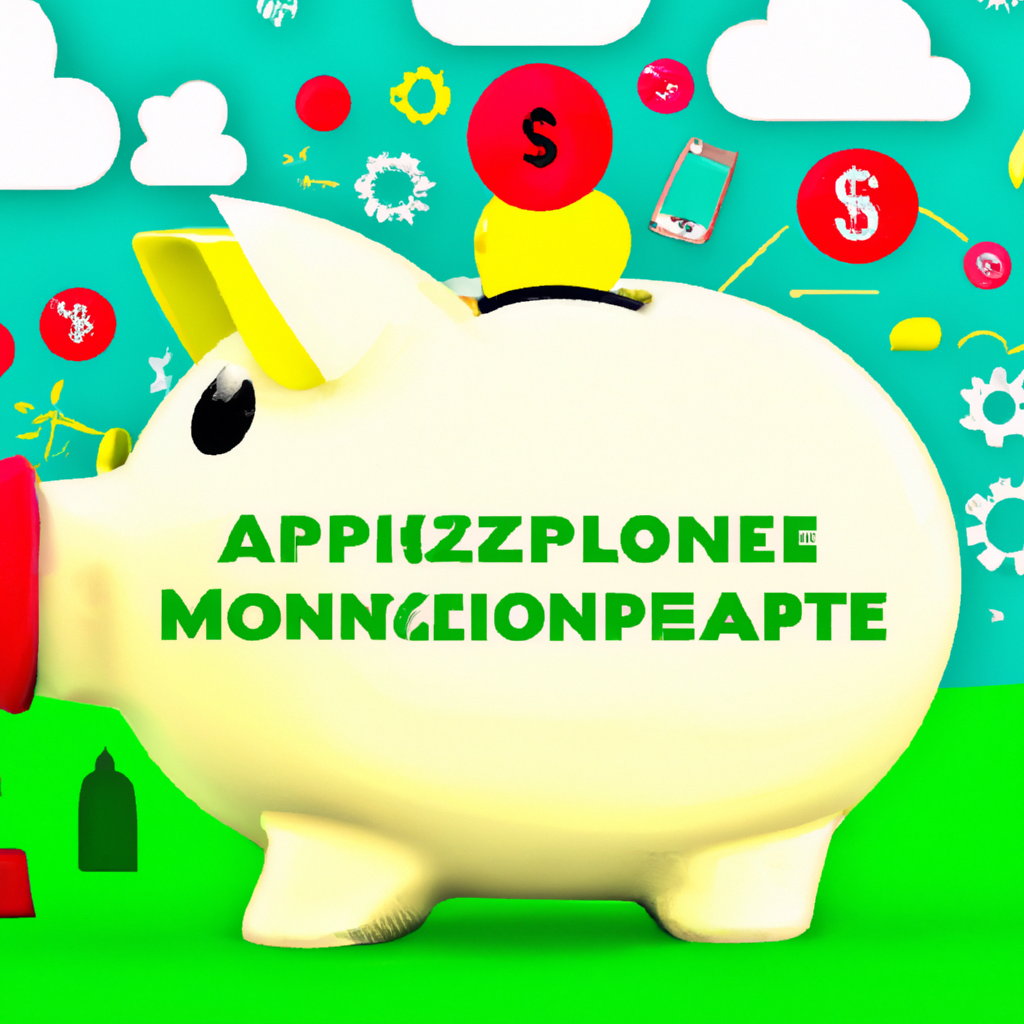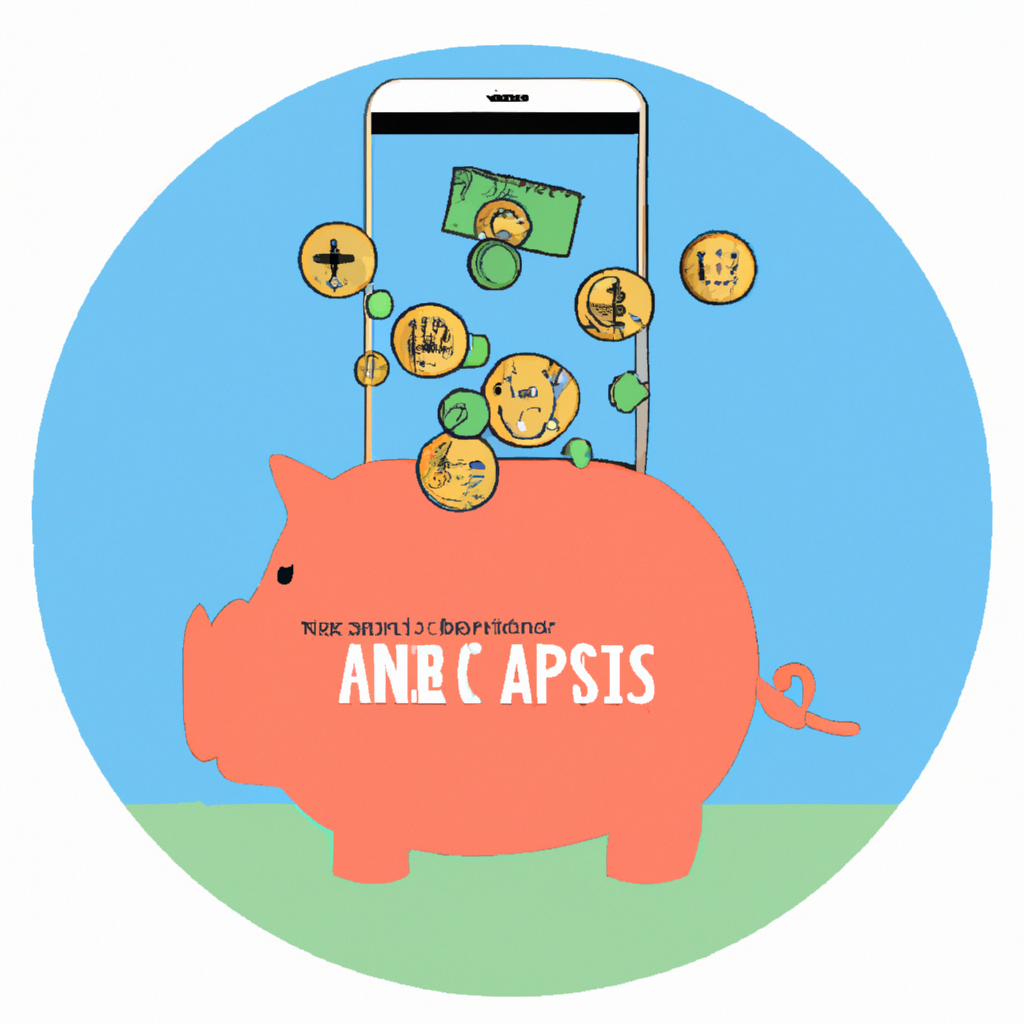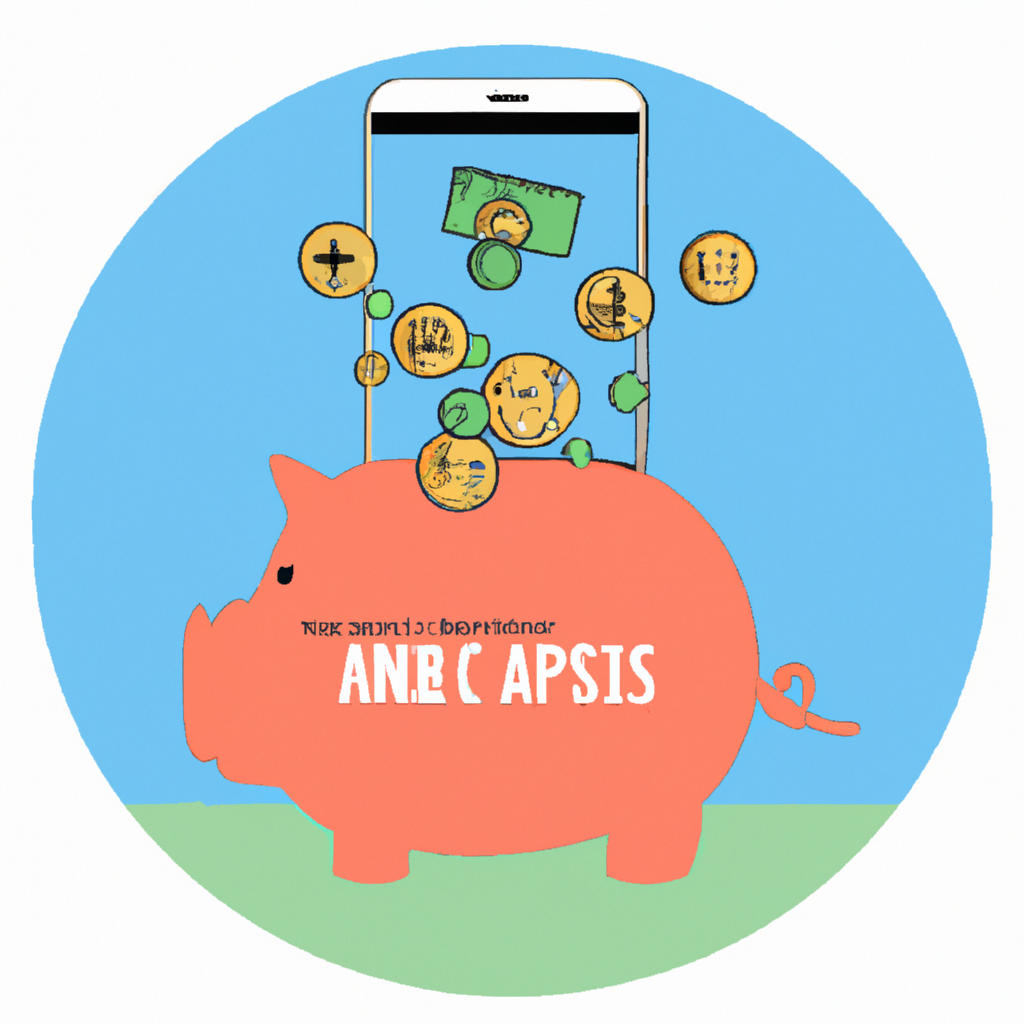Ever wondered how much money an app with 1,000 users can make? Well, we’ve got the answers you’re looking for. In this article, we’ll explore the factors that play a role in determining the revenue generated by an app with a relatively small user base. From in-app purchases to advertising, we’ll break down the potential income streams and give you a realistic insight into the financial prospects of such an app. So, if you’re curious to know what kind of earnings can be expected from a modest user count, keep reading to find out!
App Revenue Models
When it comes to generating revenue from mobile applications, there are several different models to consider. Each model has its own strengths and weaknesses, and the choice of which one to use will depend on the specific goals and target audience of your app.
Advertising
One common app revenue model is advertising. This involves displaying ads within the app and earning money based on the number of ad impressions or clicks. Advertisements can take various forms, such as banner ads, interstitial ads, or native ads that are seamlessly integrated into the app’s design.
The advantage of the advertising model is that it allows you to offer your app for free to users, making it more accessible and potentially attracting a larger user base. However, relying solely on advertising as a revenue source can be challenging, as it requires a high volume of active users and a significant number of ad impressions or clicks to generate substantial income.
In-App Purchases
In-app purchases are another popular app revenue model. This involves offering additional digital content, features, or functionality within the app that users can purchase. Examples of in-app purchases include extra levels in a game, premium content in a news app, or virtual goods in a social networking app.
The advantage of in-app purchases is that they can provide a recurring revenue stream, as users may make multiple purchases over time. Additionally, in-app purchases allow for flexible pricing strategies, such as offering different tiers or subscription plans. However, it is important to strike the right balance between offering value to users and not making the in-app purchases feel too intrusive or necessary for a good user experience.
Freemium Model
The freemium model combines elements of both the advertising and in-app purchase models. In this model, the app is offered for free, with a basic set of features or content available to all users. However, users can then upgrade to a premium version of the app by making in-app purchases.
This model allows you to attract a large user base with the free version of the app while still providing an opportunity to generate revenue from users who choose to upgrade. It offers the benefit of both advertising income and in-app purchase income. However, it is important to carefully design the free version of the app to provide enough value to attract users without making the premium features feel essential.
Subscription Model
The subscription model involves charging users a recurring fee for ongoing access to the app or its content. This model is common for services like streaming music, video, or news apps. Subscriptions can be offered on a monthly, quarterly, or annual basis, providing a predictable revenue stream.
Subscriptions can be an effective way to generate revenue, particularly for apps that provide ongoing value or exclusive access to content. However, it can be challenging to convince users to commit to a subscription, especially if there is strong competition in the market or if similar content is available for free from other sources.
Factors Affecting App Revenue
While the choice of app revenue model is important, it is not the only factor that will determine the success of your app in generating revenue. Several other factors can impact your app’s revenue potential.
Target Market
Understanding your target market is crucial for maximizing your app’s revenue. Different demographics and user segments may have varying preferences when it comes to app purchases and engagement. For example, younger users may be more inclined to make in-app purchases for gaming apps, while older users may be more willing to pay for subscription-based services.
By conducting market research and analyzing user data, you can gain insights into your target market’s preferences and tailor your revenue model and pricing strategies accordingly.
User Engagement
User engagement is a critical factor in determining your app’s revenue potential. The more engaged users are with your app, the more likely they are to make in-app purchases, click on ads, or subscribe to a premium version.
To increase user engagement, it is crucial to create a compelling user experience through intuitive design, valuable content, and regular updates. Engaging with your users through push notifications, personalized recommendations, and social features can also help keep them invested in your app.
App Category
The category or niche in which your app falls can have a significant impact on its revenue potential. Some app categories, such as gaming or social networking, have a larger user base and higher monetization potential compared to niche categories.
Understanding the market demand and competition within your app category can help you determine realistic revenue expectations and inform your overall monetization strategy.
Monetization Strategy
Having a well-defined monetization strategy is crucial for maximizing your app’s revenue. This strategy should align with your target market, user engagement goals, and app category.
Consider factors such as the balance between free and paid features, advertising placement and frequency, pricing tiers for in-app purchases or subscriptions, and the potential for upselling or cross-selling within the app.

This image is property of pixabay.com.
Average Revenue Per User (ARPU)
Average Revenue Per User (ARPU) is a key metric for app developers and investors. It represents the average amount of revenue generated by each user over a specific period.
Definition
ARPU is calculated by dividing the total revenue generated by the app within a given period by the total number of active users during that period.
ARPU provides valuable insights into the monetization effectiveness of an app. By tracking ARPU over time, you can assess the impact of changes to your monetization strategy, pricing, or user engagement efforts.
Calculation
To calculate ARPU, you need to gather data on the total revenue generated by your app and the total number of active users during a specific period. Divide the total revenue by the total number of active users to get the average revenue per user.
For example, if your app generated $10,000 in revenue in a month and you had 1,000 active users during that month, the ARPU would be $10,000 / 1,000 = $10.
Variations
ARPU can be calculated over different time periods, such as daily, monthly, or annually, depending on the specific goals or needs of your app. Additionally, you can calculate ARPU for different segments of your user base or for specific features or content within your app.
Understanding the variations in ARPU across different user segments or features can help you identify opportunities for targeted monetization strategies or improvements to your app’s content or user experience.
Cost Per Install (CPI)
Cost Per Install (CPI) is a metric that measures the cost of acquiring each new user for your app.
Definition
CPI is calculated by dividing the total advertising or marketing spend by the total number of new app installs within a specific period.
CPI is an important metric for evaluating the efficiency of your user acquisition efforts. It helps you understand how much you need to invest in marketing to acquire each new user.
Factors Affecting CPI
Several factors can influence the CPI for your app. These include the competitiveness of your app category, the effectiveness of your marketing strategies, the quality of your app’s creative assets and messaging, and the targeting accuracy of your advertising campaigns.
Understanding these factors can help you optimize your marketing spend and improve the efficiency of your user acquisition efforts.
Calculating CPI
To calculate CPI, you need to gather data on your total advertising or marketing spend and the total number of new app installs during a specific period. Divide the total advertising spend by the number of new installs to get the cost per install.
For example, if you spent $1,000 on marketing and acquired 100 new app installs, the CPI would be $1,000 / 100 = $10.
By monitoring CPI over time and across different marketing channels, you can assess the effectiveness of your user acquisition strategies and make data-driven decisions to optimize your marketing budget.

User Acquisition and Retention
Acquiring new users and retaining existing ones are crucial steps in maximizing your app’s revenue potential.
Acquiring Users
User acquisition involves attracting new users to your app. This can be achieved through various marketing channels, such as social media advertising, search engine marketing, influencer partnerships, or app store optimization.
To effectively acquire users, it is essential to target your marketing efforts to the right audience, communicate the unique value proposition or benefits of your app, and optimize your app store presence to increase visibility.
Increasing Retention
Retaining users is equally important as acquiring new ones. It is more cost-effective to retain existing users than to acquire new ones.
To increase user retention, focus on delivering a superior user experience, addressing user feedback and concerns promptly, offering regular updates and new content, and providing incentives for continued engagement.
Implementing features such as push notifications, personalized recommendations, loyalty programs, or social features can also help foster a sense of loyalty and encourage users to return to your app.
Monetization Techniques
Once you have acquired and retained users, it is essential to optimize your monetization strategies to generate revenue effectively.
Maximizing Ad Revenue
If you choose the advertising model, there are several techniques to maximize your ad revenue. This includes optimizing ad placement and frequency, targeting ads based on user demographics or behavior, testing different ad formats to find the most effective ones for your app, and leveraging programmatic advertising to increase efficiency.
It is also important to balance the user experience with ad integration to avoid overwhelming or irritating your users with too many or intrusive ads.
Optimizing In-App Purchases
For apps using in-app purchases as a revenue model, there are strategies to optimize this revenue stream. This includes offering a variety of appealing and valuable in-app purchase options, identifying opportunities for upselling or cross-selling, implementing limited-time offers or discounts to incentivize purchases, and using analytics to track user behavior and identify trends that can inform your pricing and content strategies.
Creating a seamless and intuitive purchase process within your app is crucial to encourage users to complete their transactions.
Experimenting with Pricing
Regardless of your app revenue model, experimenting with pricing can help you find the optimal balance between generating revenue and attracting users. This can include offering introductory pricing, testing different price points for in-app purchases or subscriptions, or bundling multiple products or features at a discounted price.
Data-driven experimentation and A/B testing can provide valuable insights into user preferences and willingness to pay, allowing you to refine your pricing strategies accordingly.

Common Revenue Pitfalls
While there are many opportunities to generate revenue from your app, there are also common pitfalls that can hinder your success.
Low User Engagement
Low user engagement can significantly impact your app’s revenue potential. Users who do not engage with your app are less likely to make in-app purchases, click on ads, or subscribe to premium versions.
To address low user engagement, focus on improving your app’s user experience, providing valuable content or features that keep users coming back, and actively engaging with your user base through push notifications, personalized recommendations, or social features.
Lack of Monetization Strategy
A lack of a clear monetization strategy can limit your app’s revenue potential. Without a well-defined plan, you may miss out on opportunities to generate income or fail to effectively communicate and implement your chosen revenue model.
Before launching your app, ensure that you have a comprehensive monetization strategy in place that aligns with your target market, app category, and user engagement goals. Regularly assess and adjust your strategy based on user feedback, market trends, or changes in your app’s performance.
Ineffective App Marketing
Even the best app with a robust revenue model can struggle if it lacks effective marketing. If users are not aware of your app or its value proposition, they are unlikely to download or engage with it.
Invest in marketing efforts, both before and after the app launch, to increase your app’s visibility and attract users. This can include leveraging social media, optimizing your app store presence, collaborating with influencers or media outlets, or running targeted advertising campaigns.
Case Studies
Examining real-life case studies can provide valuable insights and inspiration for your app revenue strategies.
Case Study 1: App A
App A, a social networking app, adopted the freemium model. They offered a basic version of the app for free, with limited features and advertising. Users could then upgrade to a premium version for a monthly subscription fee, unlocking additional features and removing ads.
By balancing the app’s free features and premium offerings, App A attracted a significant number of free users, leading to increased engagement and a high conversion rate to the premium version. The combination of advertising revenue and subscription income allowed App A to generate substantial revenue and maintain a positive user experience.
Case Study 2: App B
App B, a gaming app, implemented the in-app purchase model. They offered the app for free, with in-app purchases available for additional levels, virtual goods, and power-ups.
Through careful game design and understanding their target market, App B created a compelling user experience that encouraged users to make in-app purchases. They regularly introduced new content and limited-time offers, which increased user engagement and revenue. Additionally, App B leveraged strategic partnerships with influencers and gaming communities to expand its user base and increase conversions.
Case Study 3: App C
App C, a news app, focused on the subscription model. They provided a range of subscription plans, offering premium news content, exclusive features, and priority access to breaking news.
By targeting their content to a specific niche market and delivering high-quality journalism, App C attracted a loyal user base willing to subscribe. They regularly engaged with subscribers through personalized recommendations and notifications, fostering a sense of community and encouraging long-term subscriptions. App C also offered free access to a subset of their content, helping to attract new users and convert them into paying subscribers.
Scaling Up
Scaling up your app’s revenue requires increasing your user base and expanding your revenue streams.
Increasing User Base
To increase your user base, consider optimizing your app store presence and leveraging app store optimization (ASO) techniques. Focus on improving your app’s visibility in search results and increasing organic downloads. Additionally, consider partnering with influencers, running targeted advertising campaigns, or exploring partnerships with app discovery platforms to reach a broader audience.
Continuously monitoring and analyzing user acquisition channels and adjusting your marketing strategies based on performance can help you drive sustained growth in your user base.
Expanding Revenue Streams
Expanding your revenue streams can help diversify your income and maximize your app’s revenue potential. Consider exploring new monetization models, such as adding a subscription tier to your existing freemium app or partnering with relevant advertisers or sponsors for exclusive campaigns. Additionally, explore opportunities for partnerships or licensing agreements that can generate revenue from your app’s intellectual property or data.
However, it is important to carefully evaluate the impact of any changes or additions to your revenue streams to ensure they align with your app’s core values and user expectations.
Conclusion
Generating revenue from mobile apps involves a combination of careful planning, user engagement strategies, and effective monetization techniques. By understanding the various revenue models available, considering factors that influence app revenue, tracking key performance metrics such as ARPU and CPI, and implementing user acquisition and retention strategies, you can increase your app’s revenue potential.
It is essential to continuously evaluate and refine your monetization strategies based on user feedback, market trends, and app performance. By learning from case studies and remaining adaptable, you can optimize revenue, scale up your app’s user base, and build sustainable revenue streams for your app’s success.
